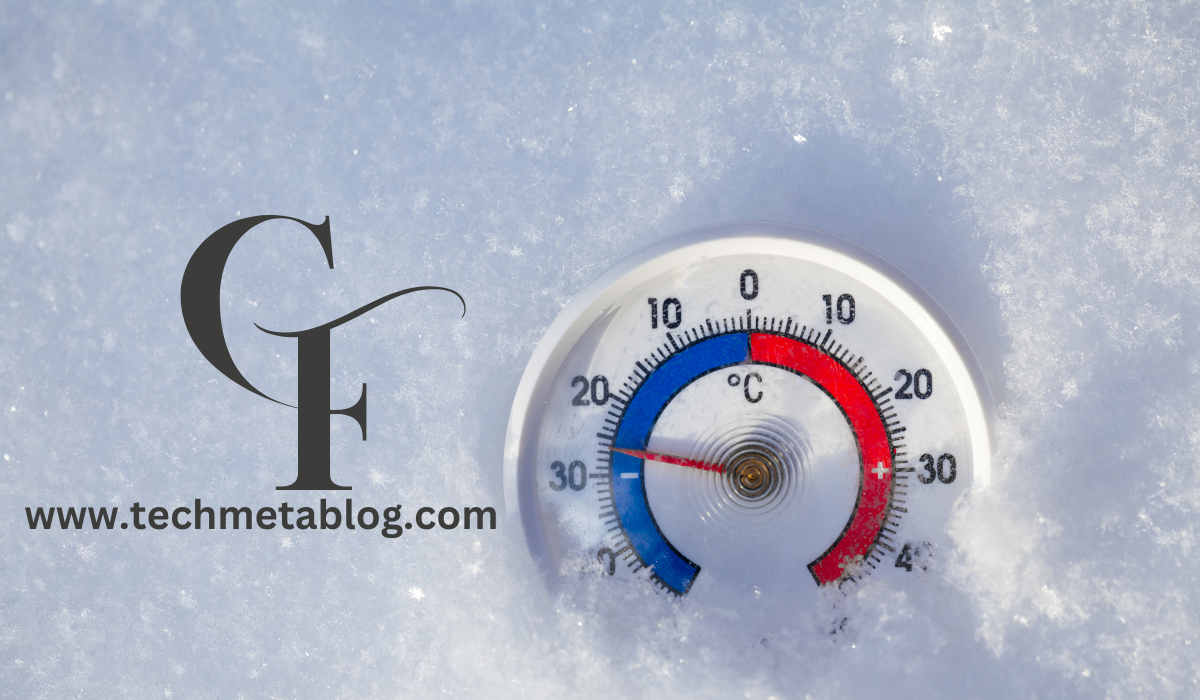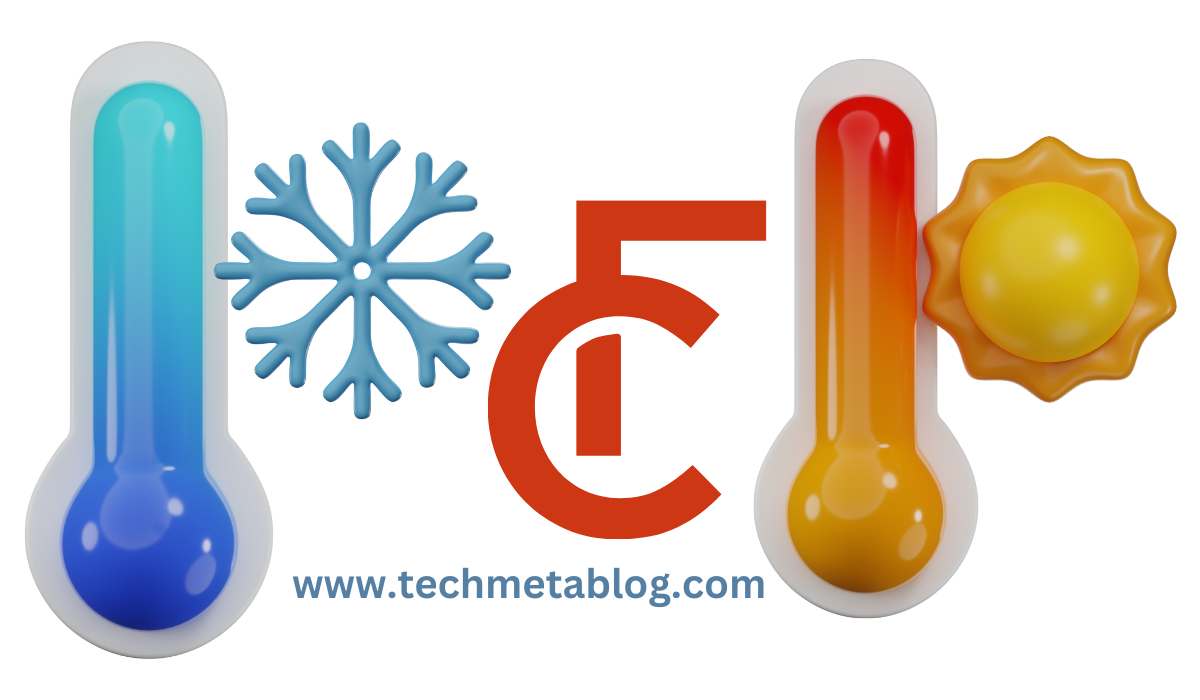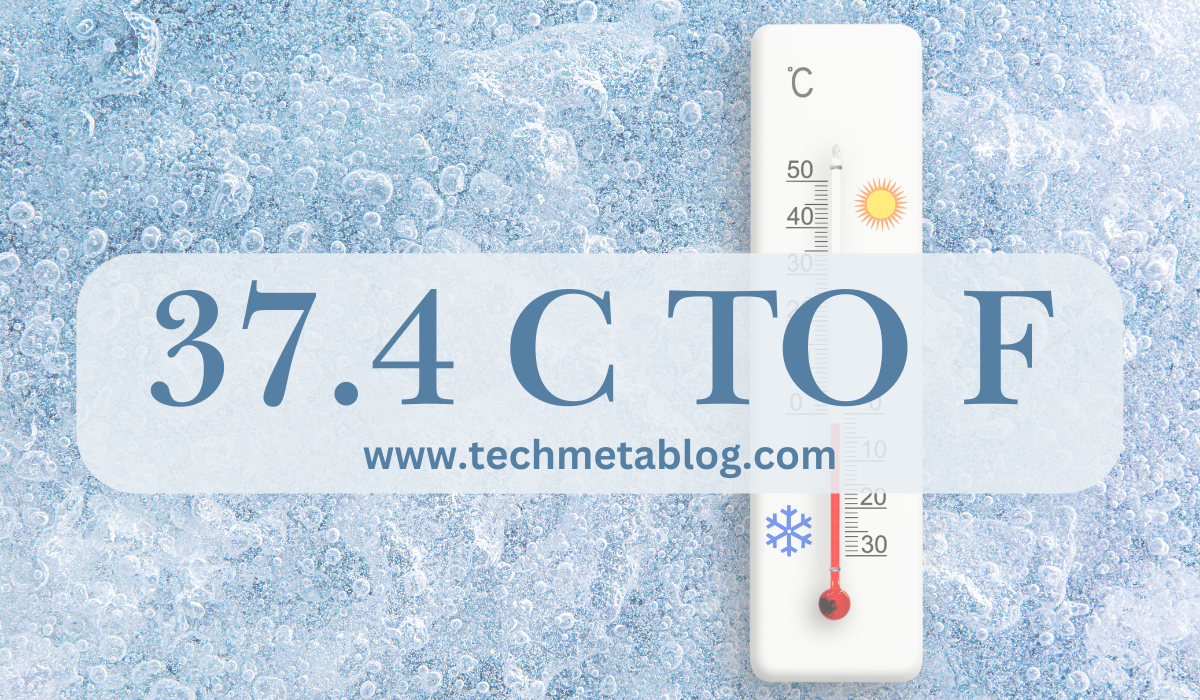The very fundamental application of converting temperatures transcends the mundane areas of everyday life to very specialized areas, like medicine and meteorology. For example, knowing how to convert 37.4 C to Fahrenheit is very important, mainly while gauging health conditions or interpreting weather forecasts. This article provides a comprehensive explanation of the process conversion, the reason why this particular temperature is crucial, the historical background of temperature scales, and practical applications. Whether you are a medical professional, student, or just a curious citizen interested in the conversion of temperatures, this guide will be well equipped to arm you with the proper knowledge and tools.
Understanding How to Convert 37.4°C to Fahrenheit
1. What is 37.4°C in Fahrenheit?
To convert Celsius (°C) to Fahrenheit (°F), we utilize the formula:
F=(C×1.8)+32\text{F} = (\text{C} \times 1.8) + 32
When applying this formula to 37.4°C:
- First, multiply 37.4 by 1.8:
37.4×1.8=67.3237.4 \times 1.8 = 67.32
- Next, add 32 to the result:
67.32+32=99.3267.32 + 32 = 99.32
Thus, 37.4°C is equivalent to 99.32°F. This temperature is often encountered in clinical settings and meteorological reports, making it crucial for various applications.
2. Application of 37.4°C
Changing the value for 37.4°C, or 99.32°F, into another unit of measurement really depends on the context. For example, this temperature is significant in different kinds of studies and fields:
Healthcare Context
37.4°C is just slightly above the average human body temperature, which is about 37°C or 98.6°F. When it reaches this level, it might indicate a mild fever, specifically to doctors dealing with pediatric and geriatric patients who have slight changes in temperature that may indicate infection or illness.
Weather Context
In climatic science, 37.4°C is a high environmental temperature that prevails during heat waves most of the time. The World Meteorological Organization has warned that such temperatures are expected to happen more frequently, with climate change, and in health awareness and urban planning.
Historical Development of Temperature Scale
3. The Celsius Scale: Origin and Background
The Celsius scale was invented in 1742 by Swedish astronomer Anders Celsius. It was originally defined with 0°C the boiling point of water and 100°C the freezing point; it was then reversed to the more intuitive format we use today:
- 0°C for the freezing point of water.
- 100°C for the boiling point of water.
It is simple and, due to its acceptability to the metric system, nearly universally applied for most scientific research and routine application throughout most regions of the world.
4. The Fahrenheit Scale: Discovery and Usage
The Fahrenheit scale was developed in 1724 by Daniel Gabriel Fahrenheit, a German-Polish physicist. He presented a scale that defined:
- 32°F as the freezing point of water
- 212°F as the boiling point of water.
Fahrenheit’s scale was constructed in such a way to be able to provide finer resolution for temperature, and therefore is perfectly suited for many purposes.
Usage of Fahrenheit in the United States
Though in the rest of the world, Celsius has more usage, it still is a staple of the United States. Old habits, the fact that American engineers and meteorologists used the scale long ago, and cultural momentum have all combined to keep this going.
Scientific Explanation of Temperature Scales
How Celsius and Fahrenheit Differ Scientifically
The primary difference between Celsius and Fahrenheit is based on reference points:
- Celsius refers to the freezing and boiling points of water.
- Fahrenheit considers a water, ice, and salt mixture for the freezing point and an approximation of a human body temperature.
The formula converting the temperatures takes into account these differences and allows making an accurate translation of temperature in between the two scales.
Significance of 37.4°C in Thermodynamics
In thermodynamics, this value of 37.4°C is significant in that it is almost the optimal temperature for human enzymes. Human enzymes work most efficiently at around 37°C; therefore, minor deviations can significantly affect metabolic processes, and therefore, there is a need for highly accurate temperature measurements in medical treatments.
Applications of Temperature Conversion Across Multiple Fields
Medicine and Health
Temperature plays a critical role in determining health conditions. A body temperature of 37.4°C (or 99.32°F) can be indicated by the following conditions :
- Low-Grade Fever: The temperature at 37.4°C is considered to be a low-grade fever and might suggest the start of an infection, especially among susceptible patients such as infants and elderly.
- Vaccination Monitoring: Generally, after vaccination, health care professionals take note of body temperature since low-grade fever is usually the result.
Table 1: Fever Classification
| Temperature (°C) | Classification |
|---|---|
| 36.5 to 37.4 | Normal |
| 37.5 to 38.0 | Low-grade fever |
| 38.1 to 39.0 | Moderate fever |
| 39.1 and above | High fever |
Climate Science and Weather Forecasting
Climate scientists and meteorologists require accurate temperature conversion in calculating their forecasts. For instance, 37.4°C becomes a point of reference in identifying what constitutes heatwaves and how these would impact both the health and safety of the people.
Table 2: Average Summer Temperatures and Records
| Region | Average Summer Temperature (°C) | Peak Temperature (°C) | Year of Record |
|---|---|---|---|
| Death Valley, USA | 47°C | 56.7°C | 1913 |
| Islamabad, Pakistan | 38°C | 46.5°C | 2021 |
| Paris, France | 25°C | 42.6°C | 2019 |
Industrial and Engineering Applications
In most engineering fields, the conversion of temperature is necessary in precision. Especially,
HVAC Systems: Engineers require the calculation of temperature conversion to devise proper heating, ventilation, and air conditioning systems that should ensure comfort and safety measures.
Food Industry: The temperature involved in the food safety processes should be accurate to that extent. Often, pasteurization involves a temperature of 71.6°C or 160°F.
Practical Devices for Temperature Conversion
Digital Tools
Websites for Online Conversion: A website such as UnitConverters.net provides presentation-friendly tools that demonstrate ease in the conversion of temperatures from Celsius to Fahrenheit and vice versa.
Mobile Applications: There are several applications available that can be used to calculate the conversion right in your mobile, such as Google Calculator or Convert Units.
User-Friendly Conversion Methods
For those who do calculations manually, here are the steps for precise conversion:
Celsius to Fahrenheit: Apply the formula
For those who prefer manual calculations, here are the steps for accurate conversions:
- Celsius to Fahrenheit: Use the formula F=(C×1.8)+32\text{F} = (\text{C} \times 1.8) + 32.
- Fahrenheit to Celsius: Use the formula C=(F−32)×59\text{C} = (\text{F} – 32) \times \frac{5}{9}
Approximation Techniques for Fast Conversion
For fast estimates:
- Celsius to Fahrenheit: Multiply the Celsius by 2 and add 30
- Fahrenheit to Celsius: Subtract 30 then divide by 2
- Detailed Study of Body Temperaturenolo
Knowledge of Normal Body Temperature Levels
Normal body temperature varies from day to day, and even time of day, age, and method of measurement (oral, ear, armpit) can affect normal ranges. Generally, the normal range is:
Between 36.5°C and 37.2°C (or 97.7°F to 99°F) in most adults.
- 37.4°C is usually not a fever if isolated. It requires other symptoms.
- 14. 37.4°C: What Does it Mean, by Age Group?
For some age groups, 37.4°C may mean something different.
14. 37.4°C: Implications for Different Age Groups
- Newborn and Babies: A temperature of over 37.4°C for babies can indicate a serious infection that requires immediate visit to a doctor.
- Elderly: Low-grade fevers may be symptoms of infections as older adults tend to have weakened immune systems.
Frequently Asked Questions (FAQs)
1. What is the value of 37.4°C in Fahrenheit?
Answer: 37.4°C is equal to 99.32°F.
2. Is 37.4°C a fever?
Answer: It is a low-grade fever.
3. How to convert Celsius to Fahrenheit quickly?
Answer: Roughly double the Celsius temperature and add 30
4. Why is body temperature important?
Answer: It is a vital index of health, useful in the diagnosis of diseases and monitoring the functioning of the body.
5. What is normal?
Answer: The normal body temperature generally ranges from 36.5°C to 37.2°C.
6. Can ambient temperature affect the body temperature?
Answer: Yes, outside temperatures can affect the regulation of temperature inside the human body.
7. Which of the following affect body temperature?
Answer Factors Age, Activity level, Time of the day, Overall health status
8. Is 37.4°C safe for babies?
Answer: Though 37.4°C is not a cause of instant concern, it is very much important to look for more symptoms.
9. How often should I measure body temperature?
Answer: Whenever necessary, especially when you feel some kind of sign that you are ill.
10. What to do if my temperature is 37.4°C?
Answer: Watch for other symptoms of illness and seek medical attention if the fever persists or worsens.
11. What are some common symptoms of a fever?
Answer: Chills, sweating, headache, body aches, and fatigue are some others.
12. How can I get the best possible determination of my body temperature?
Answer: Rectal thermometers are thought to be the most accurate of all types of thermometers.
13. How should I measure my own temperature?
Answer: The best way to take your own temperature is to follow the instructions that come with the thermometer.
14. What should you avoid before taking your temperature?
Answer: Avoid having a hot or cold drink, exercise, or bathing before taking.
15. Can you diagnose the presence of an illness by the presence of fever?
Answer: No; the presence of fever does not necessarily imply illness and is often associated with other symptoms.
Conclusion
This conversion of 37.4°C to Fahrenheit, aside from being a mathematic activity, is an ordinary skill that can be applied in various sectors-from health care to climate studies-understandingly: knowing the value of such temperature could be crucial in monitoring health and understanding the environment.
Consider the implications of these units in daily life, especially in a world increasingly influenced by climatic change and health concerns. Conversion among temperature scales becomes an important type of skill because in the presence of such adaptive changes in the environment, we might need to know how to interpret this change.
Also read more : Why do checkout computers talk to you in japan

